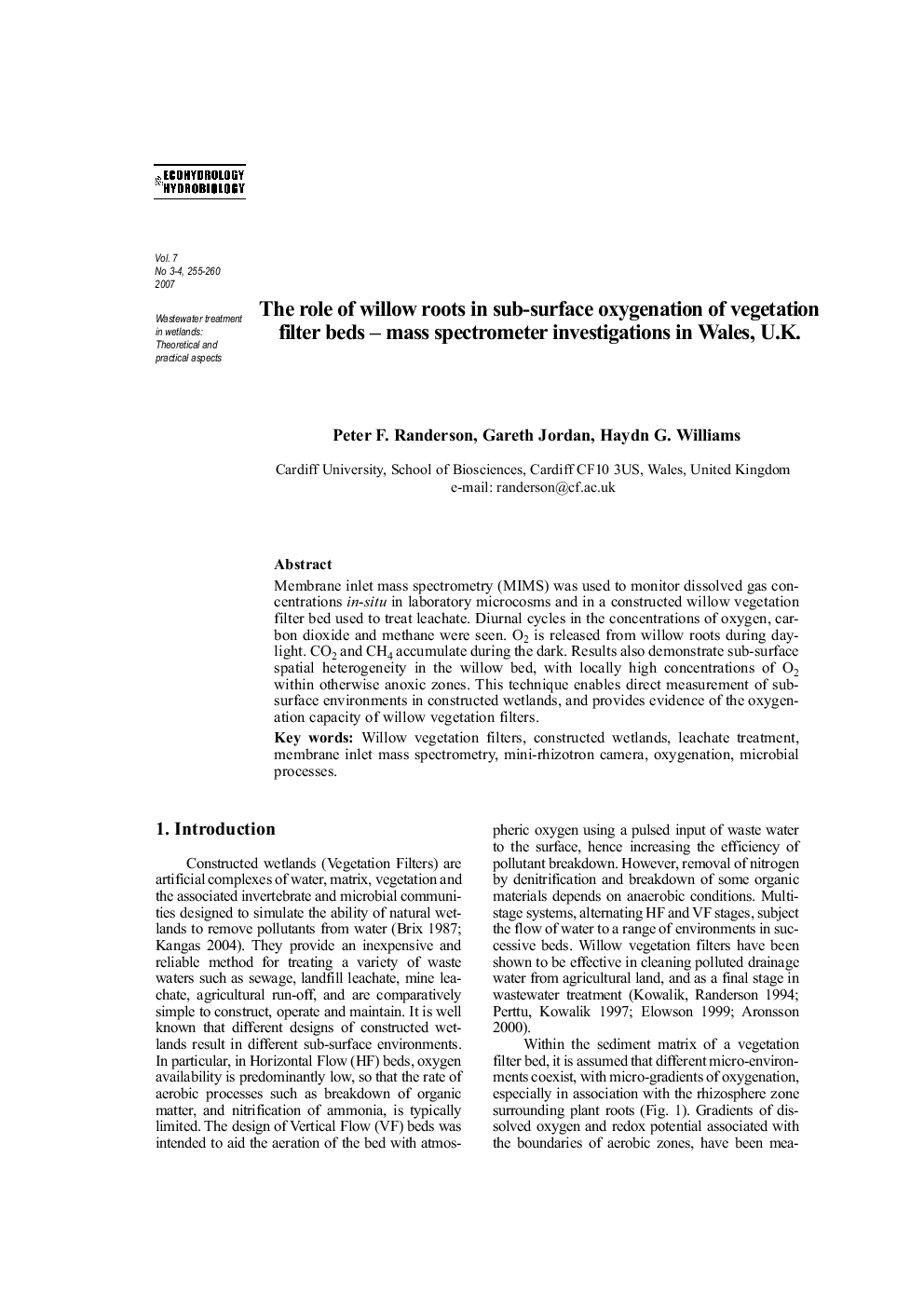| Article ID | Journal | Published Year | Pages | File Type |
|---|---|---|---|---|
| 4388266 | Ecohydrology & Hydrobiology | 2007 | 6 Pages |
Abstract
Membrane inlet mass spectrometry (MIMS) was used to monitor dissolved gas concentrations in-situ in laboratory microcosms and in a constructed willow vegetation filter bed used to treat leachate. Diurnal cycles in the concentrations of oxygen, carbon dioxide and methane were seen. O2 is released from willow roots during daylight. CO2 and CH4 accumulate during the dark. Results also demonstrate sub-surface spatial heterogeneity in the willow bed, with locally high concentrations of O2 within otherwise anoxic zones. This technique enables direct measurement of subsurface environments in constructed wetlands, and provides evidence of the oxygenation capacity of willow vegetation filters.
Keywords
Related Topics
Life Sciences
Agricultural and Biological Sciences
Agricultural and Biological Sciences (General)
Authors
Peter F. Randerson, Gareth Jordan, Haydn G. Williams,
